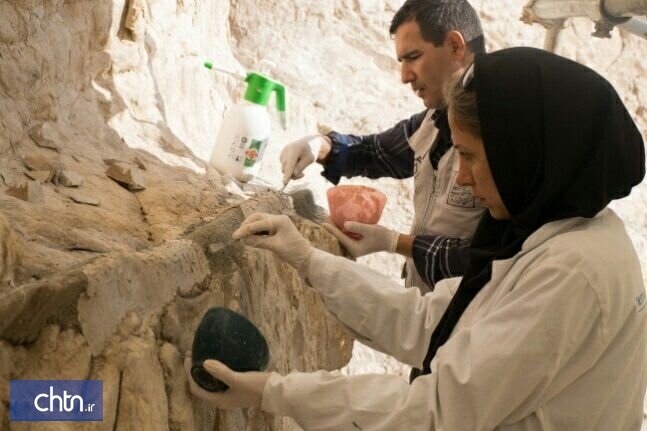TEHRAN – A restoration work on the equestrian relief of Hormizd II, the Sassanid king (r. 303 BC– 309), will be completed within the next week.
The bas-relief is one of those rock-carved imageries dotted below massive rock-hewn tombs at Naqsh-e Rostam, the Achaemenid necropolis situated near the UNESCO-registered Persepolis in southern Iran.
“Restoration of the bas-relief is carried out with a protective approach and based on the theoretical principals of restoration, and for this purpose, new materials for stone restoration have been used,” CHTN quoted Mostafa Rakhshandekhou who leads the restoration project, as saying on Monday.
The restoration project started in December 2019 and will come to an end by May 4, he said.
One of the wonders of the ancient world, Naqsh-e Rostam embraces four tombs are where Persian Achaemenid kings are laid to rest, believed to be those of Darius II, Artaxerxes I, Darius I and Xerxes I (from left to right facing the cliff), although some historians are still debating this.
There are gorgeous bas-relief carvings above the tomb chambers that are similar to those at Persepolis, with the kings standing on thrones supported by figures representing the subject nations below. There also two similar graves situated on the premises of Persepolis probably belong to Artaxerxes II and Artaxerxes III.
Beneath the funerary chambers are dotted with seven Sassanian era (224–651) bas-reliefs cut into the cliff depict vivid scenes of imperial conquests and royal ceremonies; signboards below each relief give a detailed description in English.
TAGS


No comments:
Post a Comment